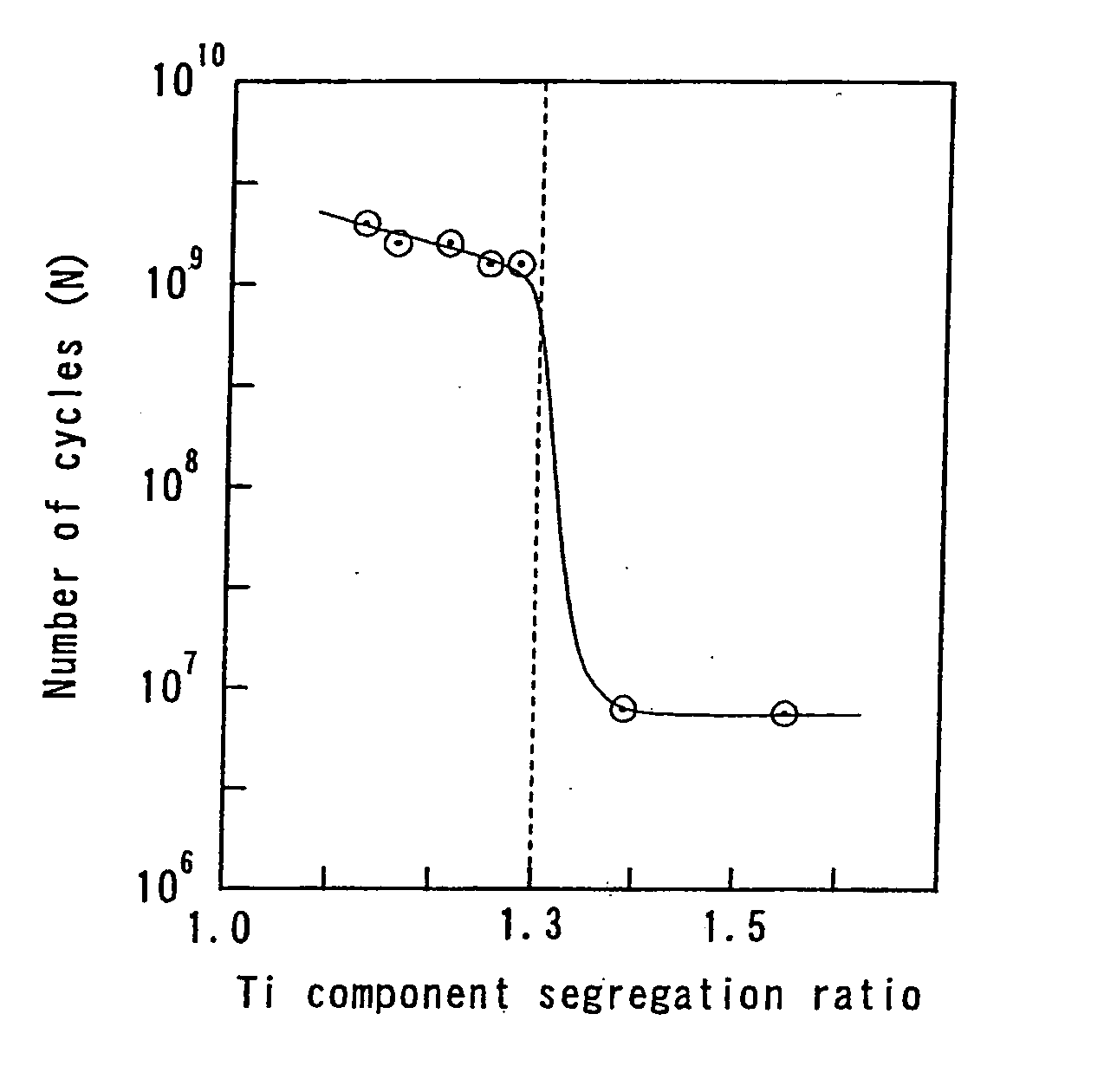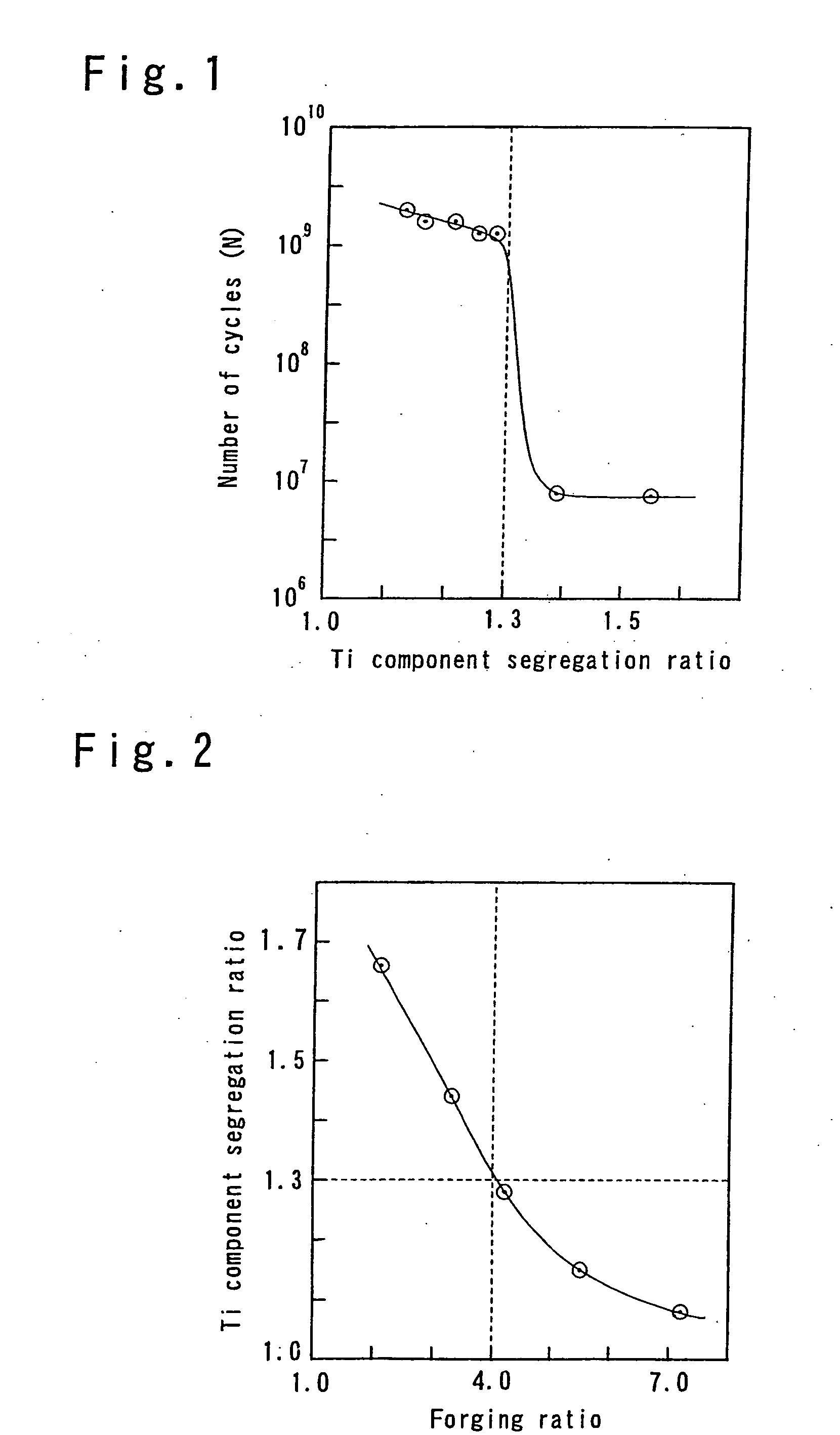Maraging steel excellent in fatigue characteristics and method for producing the same
a maraging steel and fatigue characteristic technology, applied in the field of maraging steel, can solve the problems of reducing the fatigue strength, creating inferior durability, and increasing the use conditions of machinery and construction, and achieves the effects of easy manufacturing, excellent fatigue characteristics, and easy manufacturing of maraging steel
- Summary
- Abstract
- Description
- Claims
- Application Information
AI Technical Summary
Benefits of technology
Problems solved by technology
Method used
Image
Examples
first embodiment
[0067] The maraging steel of the present invention has a matrix made essentially of a martensite monophase and the Ti component segregation ratio and the Mo component segregation ratio in the structure of 1.3 or less each.
[0068] The Ti and Mo, especially Ti, among the chemical components segregate readily. When component segregation of Ti and Mo occurs in the steel ingot during casting of the molten steel, component segregation cannot be eliminated even by plastic working such as rolling or forging the steel ingot and a band structure develops based on the component segregation. When aging the maraging steel after plastic working, significant fluctuations in strength inside and outside the band structure are generated, and the interfaces of the band structure serve as the origin of fatigue rupture. Thus the fatigue strength decreases. In the case of a maraging steel plate in particular, the band structure becomes conspicuous and its negative effects are accentuated in thin plate of ...
second embodiment
[0076] The maraging steel of the second embodiment is produced by melting a steel of the aforementioned chemical composition, preferably in a vacuum atmosphere, casting the molten steel by a mold with the prescribed dimensional relationships, and conducting appropriate plastic working or soaking treatment combined with plastic working of the steel ingot that have the prescribed dimensional relationships obtained in this way.
[0077] As shown in FIG. 9 in the steel ingot, when the diameter of a corresponding circle with a circumference corresponding to the circumferential length L1 of the top of the steel ingot is taken as D1, the diameter of a corresponding circle with a circumference corresponding to the circumferential length L2 of the bottom of the steel ingot is taken as D2, the height of the steel ingot is taken as H, the diameter of a corresponding circle with a circumference corresponding to the circumferential length of the steel ingot at a location of H / 2 is taken as D, and t...
PUM
| Property | Measurement | Unit |
|---|---|---|
| temperature | aaaaa | aaaaa |
| size | aaaaa | aaaaa |
| hot holding time | aaaaa | aaaaa |
Abstract
Description
Claims
Application Information
 Login to View More
Login to View More - R&D
- Intellectual Property
- Life Sciences
- Materials
- Tech Scout
- Unparalleled Data Quality
- Higher Quality Content
- 60% Fewer Hallucinations
Browse by: Latest US Patents, China's latest patents, Technical Efficacy Thesaurus, Application Domain, Technology Topic, Popular Technical Reports.
© 2025 PatSnap. All rights reserved.Legal|Privacy policy|Modern Slavery Act Transparency Statement|Sitemap|About US| Contact US: help@patsnap.com



